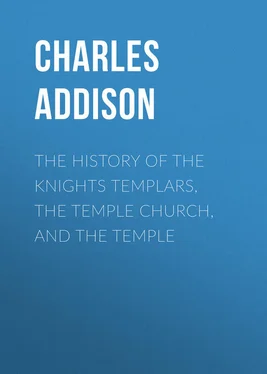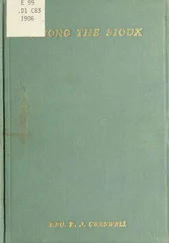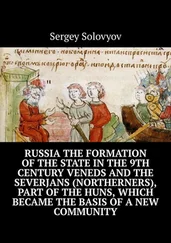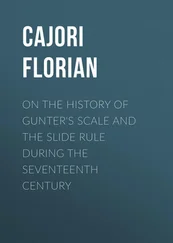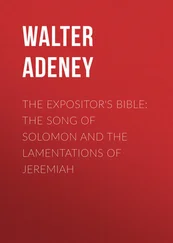Charles Addison - The History of the Knights Templars, the Temple Church, and the Temple
Здесь есть возможность читать онлайн «Charles Addison - The History of the Knights Templars, the Temple Church, and the Temple» — ознакомительный отрывок электронной книги совершенно бесплатно, а после прочтения отрывка купить полную версию. В некоторых случаях можно слушать аудио, скачать через торрент в формате fb2 и присутствует краткое содержание. Жанр: foreign_antique, foreign_prose, на английском языке. Описание произведения, (предисловие) а так же отзывы посетителей доступны на портале библиотеки ЛибКат.
- Название:The History of the Knights Templars, the Temple Church, and the Temple
- Автор:
- Жанр:
- Год:неизвестен
- ISBN:нет данных
- Рейтинг книги:5 / 5. Голосов: 1
-
Избранное:Добавить в избранное
- Отзывы:
-
Ваша оценка:
- 100
- 1
- 2
- 3
- 4
- 5
The History of the Knights Templars, the Temple Church, and the Temple: краткое содержание, описание и аннотация
Предлагаем к чтению аннотацию, описание, краткое содержание или предисловие (зависит от того, что написал сам автор книги «The History of the Knights Templars, the Temple Church, and the Temple»). Если вы не нашли необходимую информацию о книге — напишите в комментариях, мы постараемся отыскать её.
The History of the Knights Templars, the Temple Church, and the Temple — читать онлайн ознакомительный отрывок
Ниже представлен текст книги, разбитый по страницам. Система сохранения места последней прочитанной страницы, позволяет с удобством читать онлайн бесплатно книгу «The History of the Knights Templars, the Temple Church, and the Temple», без необходимости каждый раз заново искать на чём Вы остановились. Поставьте закладку, и сможете в любой момент перейти на страницу, на которой закончили чтение.
Интервал:
Закладка:
“These things are done perpetually at Jerusalem, and the world is aroused, the islands hear, and the nations take heed from afar…”
St. Bernard then congratulates Jerusalem on the advent of the soldiers of Christ, and declares that the holy city will rejoice with a double joy in being rid of all her oppressors, the ungodly, the robbers, the blasphemers, murderers, perjurers, and adulterers; and in receiving her faithful defenders and sweet consolers, under the shadow of whose protection “Mount Zion shall rejoice, and the daughters of Judah sing for joy.”
“Be joyful, O Jerusalem,” says he, in the words of the prophet Isaiah, “and know that the time of thy visitation hath arrived. Arise now, shake thyself from the dust, O virgin captive, daughter of Zion; arise, I say, and stand forth amongst the mighty, and see the pleasantness that cometh unto thee from thy God. Thou shalt no more be termed forsaken , neither shall thy land any more be termed desolate … Lift up thine eyes round about, and behold; all these gather themselves together, and come to thee. This is the assistance sent unto thee from on High. Now, now, indeed, through these is that ancient promise made to thee thoroughly to be performed. ‘I will make thee an eternal joy, a glory from generation to generation.’
“Hail, therefore, O holy city, hallowed by the tabernacle of the Most High! Hail, city of the great King, wherein so many wonderful and welcome miracles have been perpetually displayed. Hail, mistress of the nations, princess of provinces, possession of patriarchs, mother of the prophets and apostles, initiatress of the faith, glory of the christian people, whom God hath on that account always from the beginning permitted to be visited with affliction, that thou mightest thus be the occasion of virtue as well as of salvation to brave men. Hail, land of promise, which, formerly flowing only with milk and honey for thy possessors, now stretchest forth the food of life, and the means of salvation to the entire world. Most excellent and happy land, I say, which receiving the celestial grain from the recess of the paternal heart in that most fruitful bosom of thine, hast produced such rich harvests of martyrs from the heavenly seed, and whose fertile soil hast no less manifoldly engendered fruit a thirtieth, sixtieth, and a hundredfold in the remaining race of all the faithful throughout the entire world. Whence most agreeably satiated, and most abundantly crammed with the great store of thy pleasantness, those who have seen thee diffuse around them ( eructant ) in every place the remembrance of thy abundant sweetness, and tell of the magnificence of thy glory to the very end of the earth to those who have not seen thee, and relate the wonderful things that are done in thee.”
“Glorious things are spoken concerning thee, city of God!”
CHAPTER III
Hugh de Payens returns to Palestine – His death – Robert de Craon made Master – Success of the Infidels – The second Crusade – The Templars assume the Red Cross – Their gallant actions and high discipline – Lands, manors, and churches granted them in England – Bernard de Tremelay made Master – He is slain by the Infidels – Bertrand de Blanquefort made Master – He is taken prisoner, and sent in chains to Aleppo – The Pope writes letters in praise of the Templars – Their religious and military enthusiasm – Their war banner called Beauseant – The rise of the rival religio-military order of the Hospital of St. John.
“We heard the tecbir , so the Arabs call
Their shouts of onset, when with loud appeal
They challenge heaven , as if demanding conquest.”
Hugh de
Payens.
A. D. 1129.
Hugh de Payens, having now laid in Europe the foundations of the great monastic and military institution of the Temple, which was destined shortly to spread its ramifications to the remotest quarters of Christendom, returned to Palestine at the head of a valiant band of newly-elected Templars, drawn principally from England and France.
On their arrival at Jerusalem they were received with great distinction by the king, the clergy, and the barons of the Latin kingdom, a grand council was called together, at which Hugh de Payens assisted, and various warlike measures were undertaken for the extension and protection of the christian territories.
Robert de
Craon.
A. D. 1136.
Hugh de Payens died, however, shortly after his return, and was succeeded (A. D. 1136) by the Lord Robert, surnamed the Burgundian, (son-in-law of Anselm, Archbishop of Canterbury,) who, after the death of his wife, had taken the vows and the habit of the Templars. 28 28 Will. Tyr. lib. xiii. cap. 26; Anselmus , lib. iii. epistolarum. epist. 43, 63, 66, 67; Duchesne in Hist. Burg. lib. iv. cap. 37.
He was a valiant and skilful general, 29 29 Miles eximius et in armis strenuus, nobilis carne et moribus, dominus Robertus cognomine Burgundio Magister militiæ Templi. — Will. Tyr. lib. xv. cap. 6.
but the utmost exertions of himself and his military monks were found insufficient to sustain the tottering empire of the Latin Christians.
The fierce religious and military enthusiasm of the Mussulmen had been again aroused by the warlike Zinghis and his son Noureddin, two of the most famous chieftains of the age, who were regarded by the disciples of Mahomet as champions that could avenge the cause of the prophet, and recover to the civil and religious authority of the caliph the lost city of Jerusalem, and all the holy places so deeply venerated by the Moslems. The one was named Emod-ed-deen , “Pillar of religion;” and the other Nour-ed-deen , “Light of religion,” vulgarly, Noureddin. The Templars were worsted by overpowering numbers in several battles; and in one of these the valiant Templar, Brother Odo de Montfaucon, was slain. 30 30 Vir eximius frater militiæ Templi Otto de Monte Falconis, omnes de morte suâ mœrore et gemitu conficiens, occisus est. — Will. Tyr. lib. xv. cap. 6.
Emodeddeen took Tænza, Estarel, Hizam, Hesn-arruk, Hesn-Collis, &c. &c., and closed his victorious career by the capture of the important city of Edessa. Noureddin followed in the footsteps of the father: he obtained possession of the fortresses of Arlene, Mamoula, Basarfont, Kafarlatha; and overthrew with terrific slaughter the young Jocelyn de Courtenay, in a rash attempt to recover possession of his principality of Edessa. 31 31 Abulfeda , ad ann. Hegir. 534, 539. Will. Tyr. lib. xvi. cap. 4, 5, 7, 15, 16, who terms Zinghis, Sanguin. Abulfaradge Chron. Syr. p. 326, 328. Will. Tyr. lib. xvi. cap. 14.
The Latin kingdom of Jerusalem was shaken to its foundations, and the oriental clergy in trepidation and alarm sent urgent letters to the Pope for assistance. The holy pontiff accordingly commissioned St. Bernard to preach the second crusade.
Everard
des Barres.
A. D. 1146.
The Lord Robert, Master of the Temple, was at this period (A. D. 1146) succeeded by Everard des Barres, Prior of France, who convened a general chapter of the order at Paris, which was attended by Pope Eugenius the Third, Louis the Seventh, king of France, and many prelates, princes, and nobles, from all parts of Christendom. The second crusade was there arranged, and the Templars, with the sanction of the Pope, assumed the blood-red cross, the symbol of martyrdom, as the distinguishing badge of the order, which was appointed to be worn on their habits and mantles on the left side of the breast over the heart, whence they came afterwards to be known by the name of the Red Friars and the Red Cross Knights . 32 32 Odo de Diogilo , p. 33. Will. Tyr. lib. xii. cap. 7; Jac. de Vitr. cap. lxv.; Paul. Æmil. p. 254; Monast. Angl. vol. vii. p. 814.
Интервал:
Закладка:
Похожие книги на «The History of the Knights Templars, the Temple Church, and the Temple»
Представляем Вашему вниманию похожие книги на «The History of the Knights Templars, the Temple Church, and the Temple» списком для выбора. Мы отобрали схожую по названию и смыслу литературу в надежде предоставить читателям больше вариантов отыскать новые, интересные, ещё непрочитанные произведения.
Обсуждение, отзывы о книге «The History of the Knights Templars, the Temple Church, and the Temple» и просто собственные мнения читателей. Оставьте ваши комментарии, напишите, что Вы думаете о произведении, его смысле или главных героях. Укажите что конкретно понравилось, а что нет, и почему Вы так считаете.
